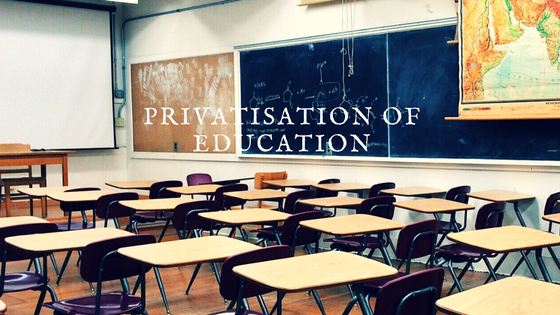Since the past few decades, Indian economy has undergone consequential policy alteration and introduces a new model of economic reforms, commonly known as LPG i.e. Liberalisation, Privatisation and Globalization. This set of reforms was brought in to help India grow better and communize with the other bigger economies of the world. Out of all, Privatisation has brought about breakneck changes in the educational sector, which has impacted our society in both positive and negatives ways. Privatisation has enabled the private parties such as individual organisations, religious institutions and other non government bodies to acquire the education industry and encourage them to accommodate to the growing demand of education across the country. There is no denying to the fact that privatisation has provided a whole new dimension to the education sector and also it has lifted our literacy rate from 48.2% in 1991 to 71.96% in 2015. Read this article to know about Privatisation of Education – Advantages and Disadvantages. Also find Schools in India both Private and Government.
Advantages of Privatisation of Education
Similarly, there are many things that privatisation has contributed positively to our society, which includes following:
- Accessible Education: There is a massive increase in the number of schools and educational institutions across the country. Education is now easily accessible to those who can afford to pay the school fees.
- Improved Infrastructure: Undoubtedly, private sector has made remarkable infrastructure changes and has replenished state of the art framework.
- Advanced teaching: They have introduced modern techniques of teaching, which helps children in better learning and increase their performance. Various modern education technology includes tabs and other gadgets, classflow, etc
- Liberty to choose institution: Increase in number of schools and colleges have provided parents with a variety of options to choose from.
- Extracurricular activities: Every private school nowadays comes up with new and interesting activity ideas that help a child to learn new things and become active in all aspects.
Disadvantages of Privatisation of Education
Despite of many constructive contributions, there are many facets that have doomed our education sector.
- Disparity in public and private schools : Private sector has raised the bars of their school standards too high that government schools are unable to match up to their benchmarks.
- Pricey Fee Structures : Modern schools have set their school fees upscale that it is difficult for parents with meagre income to bear those and thus restricts their child’s admission to such schools.
- More of a Business : The focus of private schools has shifted from providing education to earning money. This can be very well clarified from the higher donations demanded for admission of even a bright child by such institutions apart from the pricey fee structure.
- Discrimination : In order to maintain a standard, these institutions strictly avoid admission of people from poor families (which is obvious from their high prices), and thus such children are deterred from procuring education from private schools of such standards.
- Lack of trained teachers : Quality of education is a complex issue and is difficult to measure and it has not been certain of any specific method that can provide quality education. Some schools are unable to provide the standardised education due to lack of trained teachers. They are unable to provide the quality education on the uninterrupted basis.
Though privatisation have made considerable contributions and alternatives in education sector but it does uplift the burden of public schools and also do not comply with Human rights regulations. It is observed that it has intensified the sector by introducing complex infrastructure and modern techniques of teaching. It has raised a need to monitor the schools on the basis of equality, monetary demands and to maintain human rights regime.









Be the first one to comment on this story.